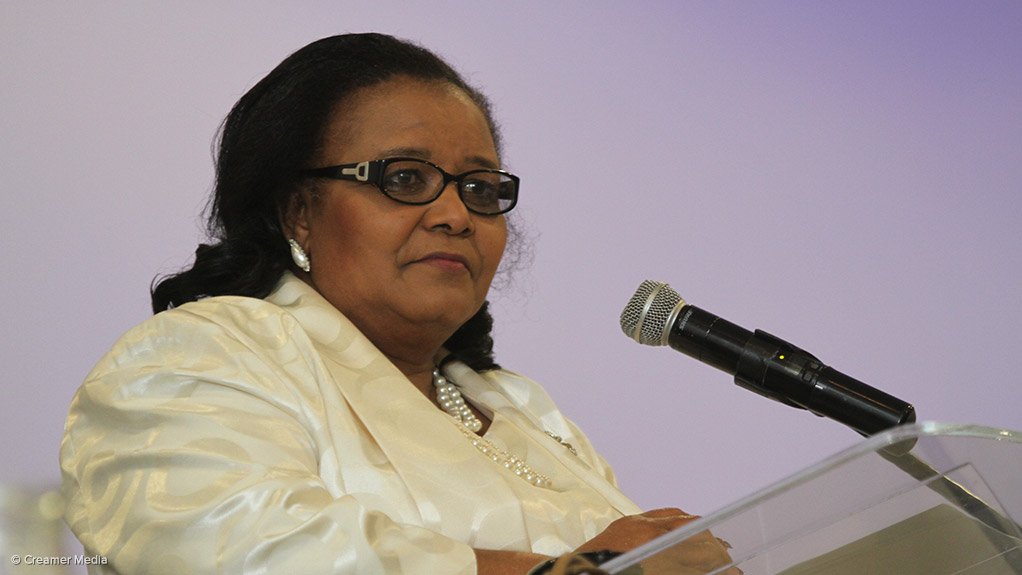The rapid rise of electronic and electrical technology – and the shortening lifecycles of the products – is leaving a mass of dangerous and harmful electronic waste (e-waste) in its wake.
In light of this, it was becoming increasingly urgent for South Africa to formulate policy proposals and apply specific rules and regulations for the proper management, collection and recycling of the estimated two-million tons a year of e-waste produced in the country.
Environmental Affairs Minister Edna Molewa on Friday said the Department of Environmental Affairs (DEA) had now prioritised the development of an Industry Waste Management Plan for electronic forms of the waste stream, with a an e-waste strategy set to be published next year.
Speaking at the National Consultative Conference on Electronic and Electrical Waste Management, in Boksburg, she explained that e-waste made up nearly 60% of South Africa’s waste stream and comprised a mix of large and small equipment used in homes and businesses, such as vacuum cleaners, toasters, electric shavers, video cameras, washing machines, electric stoves, mobile phones, calculators, personal computers and lamps.
To mitigate the health and environmental risks posed by the quantum of e-waste, the DEA, as part of the National Waste Management Strategy, aimed to build the new electronic strategy off the success of the tyre waste policy tabled three years ago.
In 2012, the DEA had approved the implementation of the Recycling and Economic Development Initiative of South Africa (Redisa) plan to promote the responsible management of waste tyres while contributing to economic growth.
By December 2014, 53 143 t, or 31%, of waste tyres had been diverted away from landfills and recycled, used for energy recovery or reused. The initiative had created 1 981 jobs and enabled the formation of 181 small-, medium-sized and microenterprises (SMMEs).
It was expected that Redisa would, by the end of 2015/16, contributed to to the creation of 254 additional SMMEs, increased the quantities of the waste tyres diverted away from landfill and created an additional 2 600 jobs.
“The department has commenced the process of consultation, research and community and industry engagement to develop an accurate understanding of the conditions that exist and to compare these with the experiences of both our developed and developing nation partners so as to formulate a baseline assessment of the nature and extent of the e-waste challenge in South Africa,” Molewa told conference delegates.
The DEA’s July call for proposals for e-waste mitigation, along with the paper and packaging and lighting waste streams, was currently at the public participation stage.
E-waste, which made up 5% to 8% of municipal solid waste in South Africa, posed significant environmental and health risks as the disposed electronics could contain over 1 000 different potential toxic substances.
Worldwide, toxins in e-waste included 2.2-million tons of lead glass, 300 000 t of batteries, 4 400 t of chlorofluorocarbon, as well as mercury, cadmium and chromium.
However, there was great value to be extracted from e-waste, with the global e-waste generation last year containing some 16.5-million tons of iron, 1.9-million tons of copper, 300 t of gold – equivalent to 11% of the world’s total 2013 gold production – and silver, aluminium, palladium and plastic, besides others, with a combined estimated value of $52-billion.
Meanwhile, the department also aimed to mitigate the dumping of e-waste in the region.
While Africa generated the lowest amount of e-waste per inhabitant at 1.7 kg a person and domestically generated only 4.5% of the global e-waste, developed countries were increasing their exports of e-waste into China and Africa by 50% to 80%.
“This is a matter of grave concern and requires focused attention,” she said.
EMAIL THIS ARTICLE SAVE THIS ARTICLE
To subscribe email subscriptions@creamermedia.co.za or click here
To advertise email advertising@creamermedia.co.za or click here











